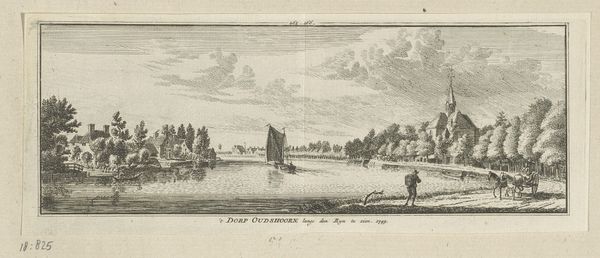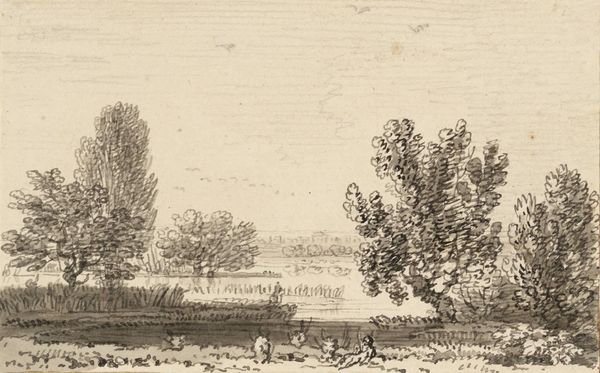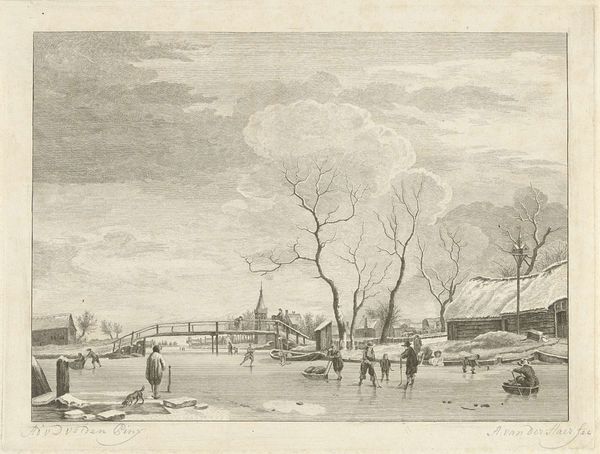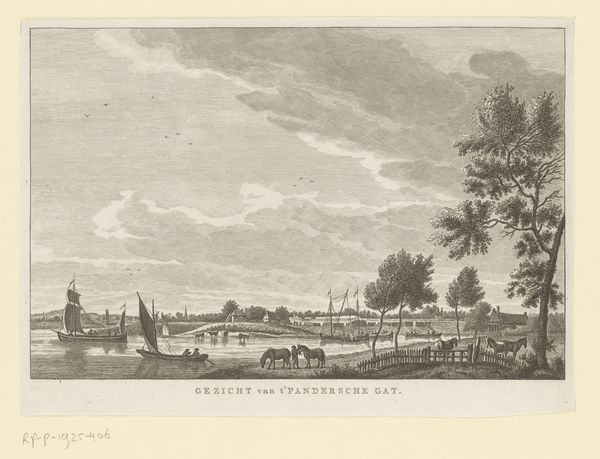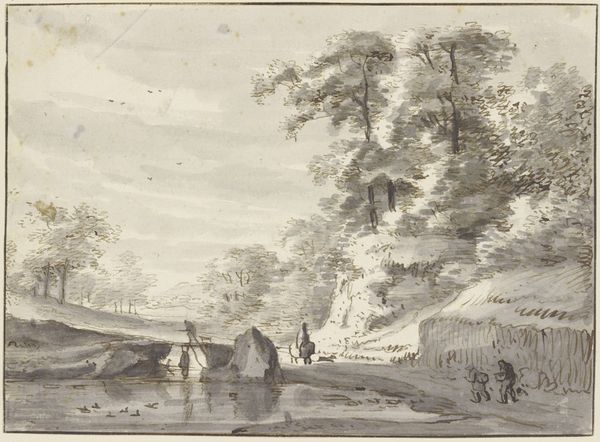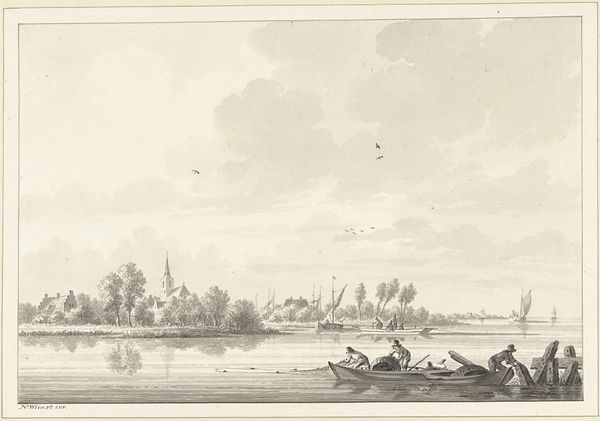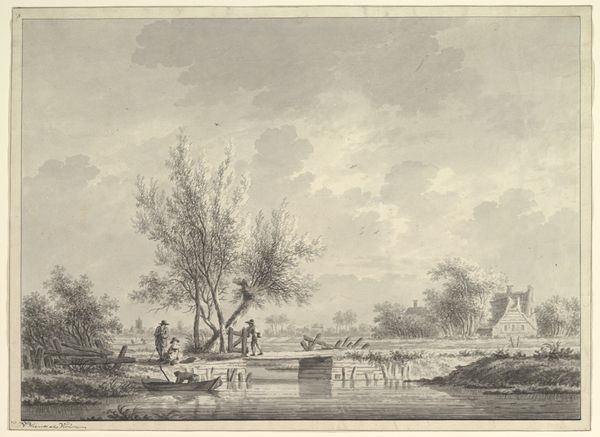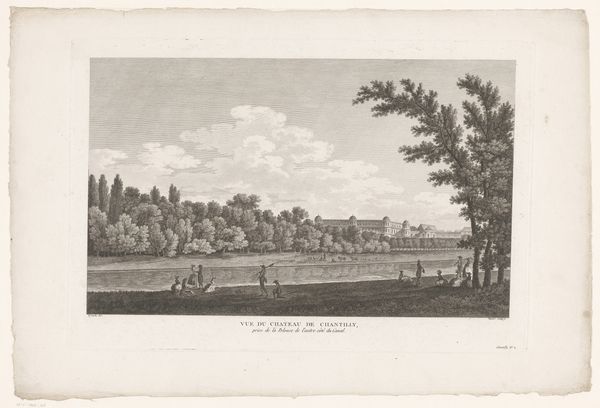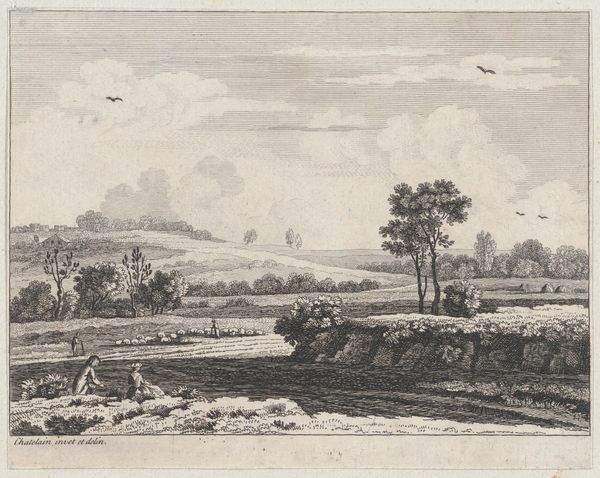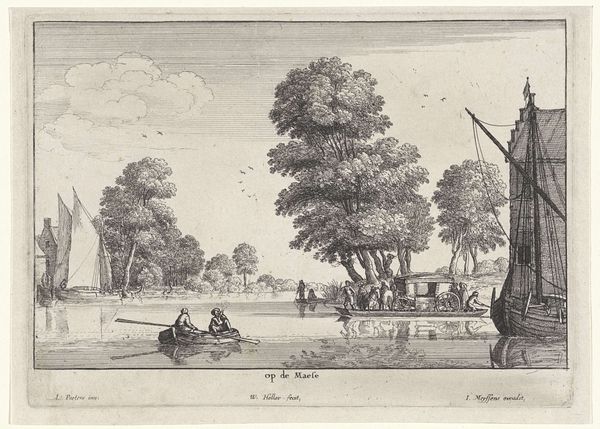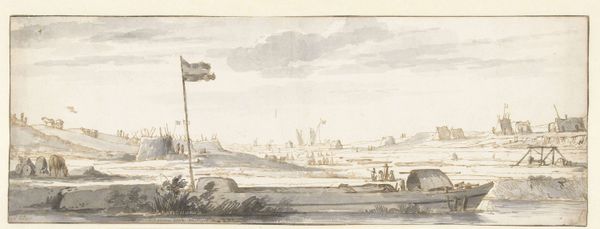
drawing, paper, ink
#
drawing
#
neoclassicism
#
landscape
#
paper
#
ink
#
15_18th-century
#
cityscape
#
realism
Dimensions: height 152 mm, width 257 mm
Copyright: Rijks Museum: Open Domain
Curator: Before us is Jan Bulthuis' "Sas van Gent," rendered in ink on paper around 1785. What strikes you immediately? Editor: The subdued palette is very striking, a sort of quiet uniformity across the landscape. It has a calming effect, almost monochromatic despite the clear tonal variations. The composition is obviously carefully constructed, creating a sense of order and serenity. Curator: Indeed, and one must appreciate how the artist used readily available materials: paper and ink. Consider also that this is not merely a pretty picture; Sas van Gent was strategically vital, the scene a constructed waterway designed to control passage. The drawing itself is therefore a document reflecting human modification of landscape for political-economic ends. Editor: While I appreciate the contextualization, I’m drawn to the lines themselves. Look at how Bulthuis uses varying thicknesses to create depth and shadow. The crispness of the architectural details juxtaposed with the softer, feathery quality of the trees. Curator: But consider that ink in 1785 wasn't just ink as we know it. The production involved labor, trade routes, specific recipes for color and binding agents - all embedded in its materiality! Even the paper – what fibers were used, its source and quality - reveals details about artistic production within the societal frameworks of the late 18th century. Editor: A valid point. Yet, when observing the linear perspective guiding the viewer's eye, it creates not just depth, but a carefully arranged stage upon which everyday life unfolds: individuals stroll, boats idle. The harmony, even staged, tells its own tale, aesthetically. Curator: Agreed, the artistry can't be dismissed. Though I argue that an art object isn’t just itself; it's intrinsically bound to economic and labor dynamics of the time. Editor: I suppose appreciating both the societal conditions in the Dutch Republic at the time in which it was made and its formal aesthetic components allows for the most nuanced, rich perspective. Curator: Precisely, seeing it through both lenses brings the artwork and its context to life.
Comments
No comments
Be the first to comment and join the conversation on the ultimate creative platform.
